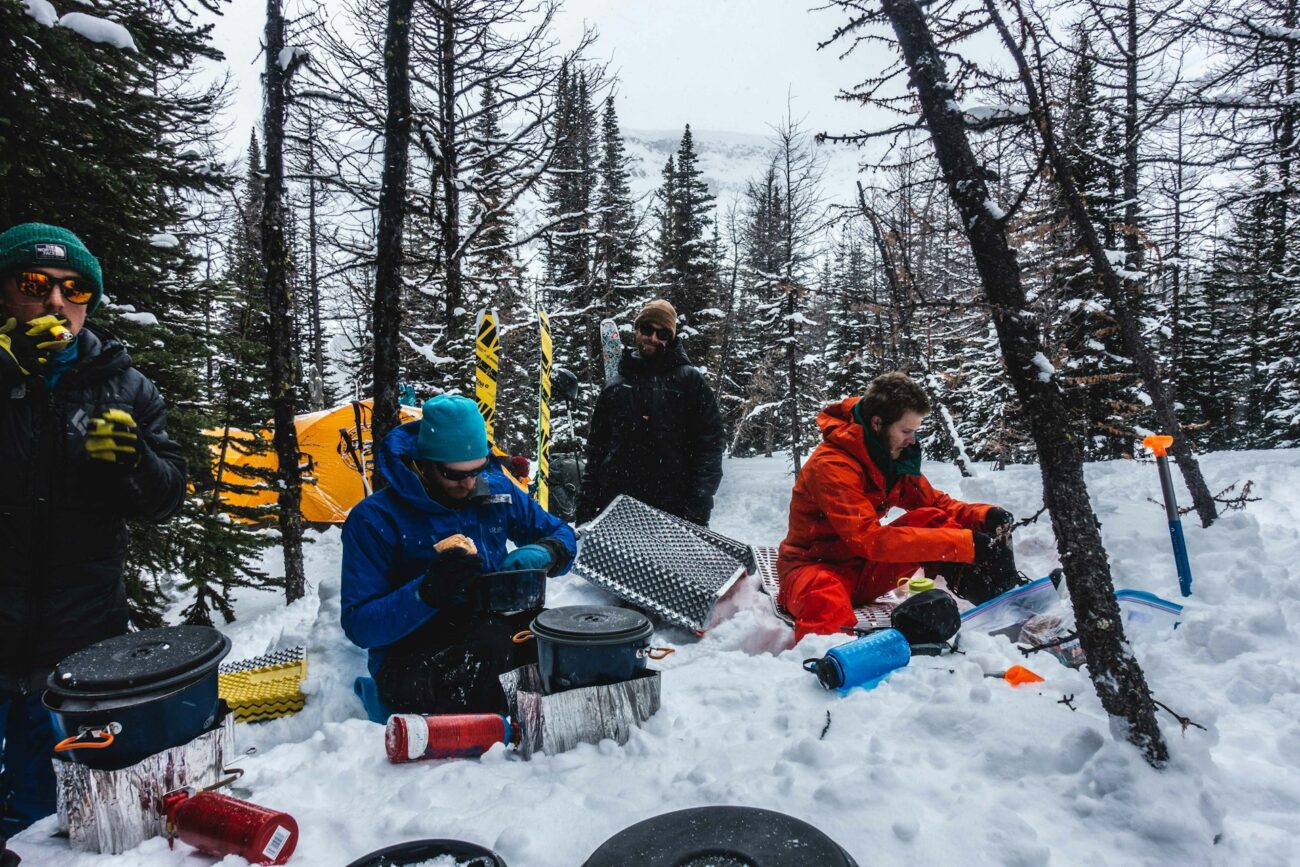As the temperatures plummet and snow blankets the landscape, most outdoor enthusiasts retreat to the comfort of their heated homes. However, for the adventurous few, winter camping offers a unique and exhilarating experience that challenges both body and mind. The serene beauty of pristine snow-covered forests, the crystalline silence of winter nights, and the satisfying accomplishment of thriving in harsh conditions make winter camping an unforgettable adventure.
But make no mistake—winter camping is not for the unprepared. Survival in sub-freezing temperatures requires specialized knowledge, proper gear, and mental fortitude. This comprehensive guide will walk you through everything you need to know to not just survive, but thrive in the winter wilderness.
Understanding the Risks of Winter Camping
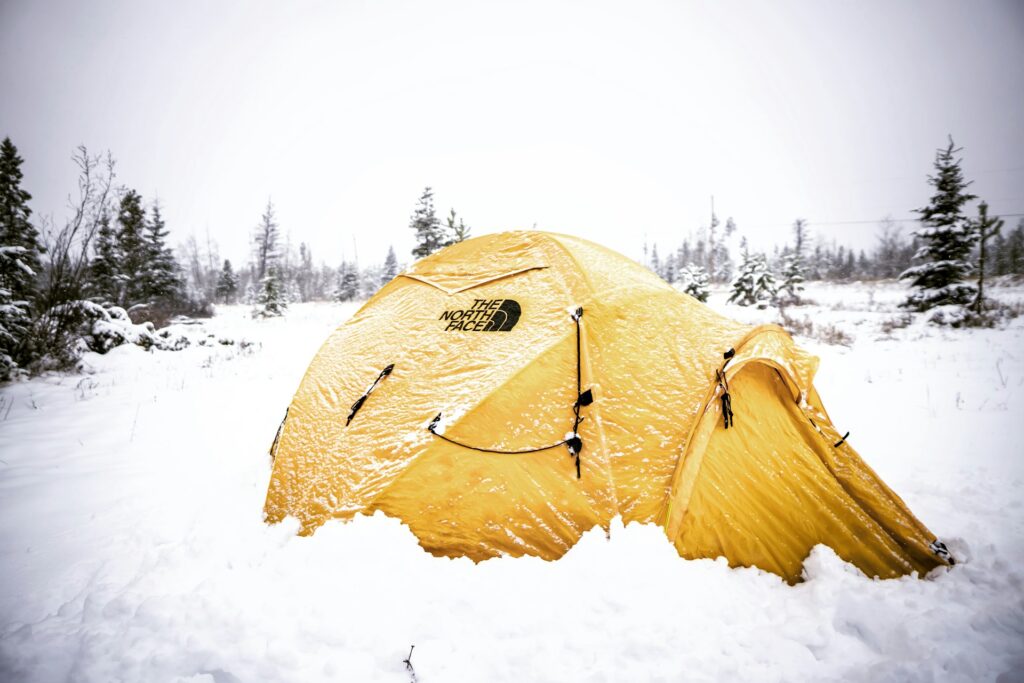
Winter camping presents unique challenges that can quickly become life-threatening if underestimated. Hypothermia, the dangerous lowering of your body’s core temperature, can occur even in temperatures above freezing when combined with moisture and wind. Frostbite can damage extremities in minutes when exposed to severe cold, potentially leading to permanent tissue damage or amputation.
Dehydration is a silent risk as many campers don’t feel as thirsty in cold weather, yet the dry winter air accelerates moisture loss through respiration. Additionally, winter storms can trap unprepared campers, leading to dangerous situations where rescue may be delayed or impossible. Understanding these risks isn’t meant to discourage winter camping but rather to emphasize the importance of thorough preparation and respect for winter conditions.
Essential Gear for Cold Weather Survival
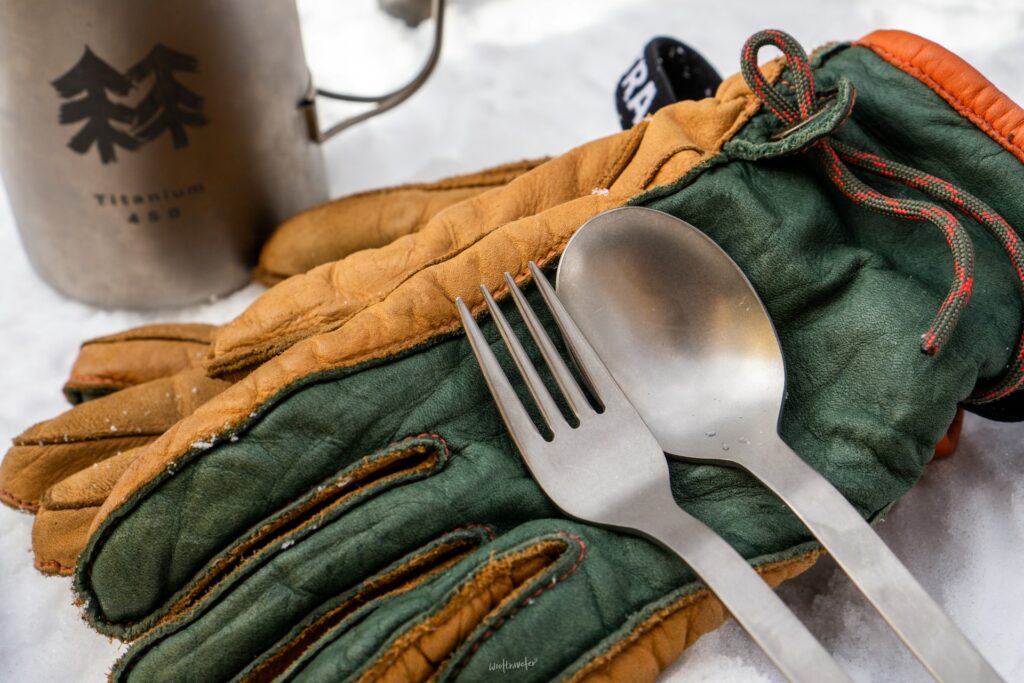
Your winter camping gear serves as your life support system in freezing conditions, making quality non-negotiable. A four-season tent designed to withstand snow load and high winds forms your primary shelter, while a sleeping bag rated at least 10°F below your expected nighttime temperatures ensures crucial warmth. A closed-cell foam sleeping pad combined with an inflatable pad creates necessary insulation between your body and the frozen ground.
Multiple clothing layers including moisture-wicking base layers, insulating mid-layers of wool or synthetic materials, and waterproof/windproof outer shells allow adaptability to changing conditions. Don’t forget essential accessories: waterproof insulated boots, multiple pairs of gloves/mittens, insulated hat, face protection, and goggles or sunglasses to prevent snow blindness. Equipment like avalanche beacons, snow shovels, and satellite communication devices aren’t luxuries in winter conditions—they’re potential lifesavers.
Selecting the Perfect Winter Campsite

Choosing an appropriate campsite becomes significantly more critical in winter conditions than during warmer seasons. Look for locations that offer natural windbreaks such as rock formations, dense stands of evergreen trees, or terrain features that can shield your tent from prevailing winds that accelerate heat loss. Avoid camping in potential avalanche zones, which include slopes between 30-45 degrees and areas beneath such slopes where avalanche debris might accumulate.
Be wary of camping under trees with heavy snow loads that could drop branches or “snow bombs” onto your tent during the night. Consider the sun’s path when positioning your tent—morning sunlight can provide welcome warmth after a cold night. Always assess overhead hazards like dead branches or unstable snow cornices that could fall without warning. Remember that ideal summer campsites near water sources may be dangerous winter locations due to thin ice or overflow water seeping through snow.
Mastering the Art of Winter Tent Setup
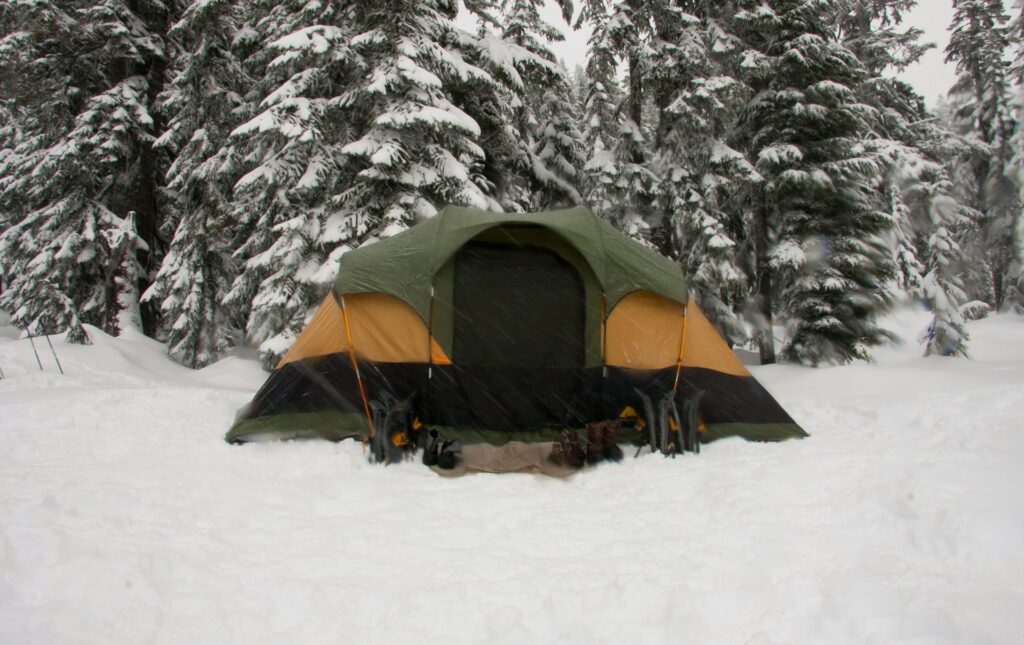
Setting up camp in winter requires techniques quite different from warm-weather camping, beginning with proper site preparation. Start by compacting the snow where your tent will stand—either by stomping it down with snowshoes or skis—then allow it to “set” for 30-60 minutes, creating a solid platform that won’t collapse under your weight during the night. Use snow stakes, buried objects (called deadmen), or filled stuff sacks to anchor your tent securely, as traditional tent stakes won’t hold in deep snow.
Consider building a snow wall on the windward side of your tent for additional protection from biting winds and drifting snow. Keep your tent ventilated despite the cold; moisture from your breath will condense and freeze inside an unventilated tent, creating an uncomfortable indoor snowfall effect. Pack snow around the base of your tent to seal drafts while ensuring vents remain clear to prevent carbon monoxide buildup if you’ll be using any flame inside for emergency warming.
Creating a Warm Sleep System
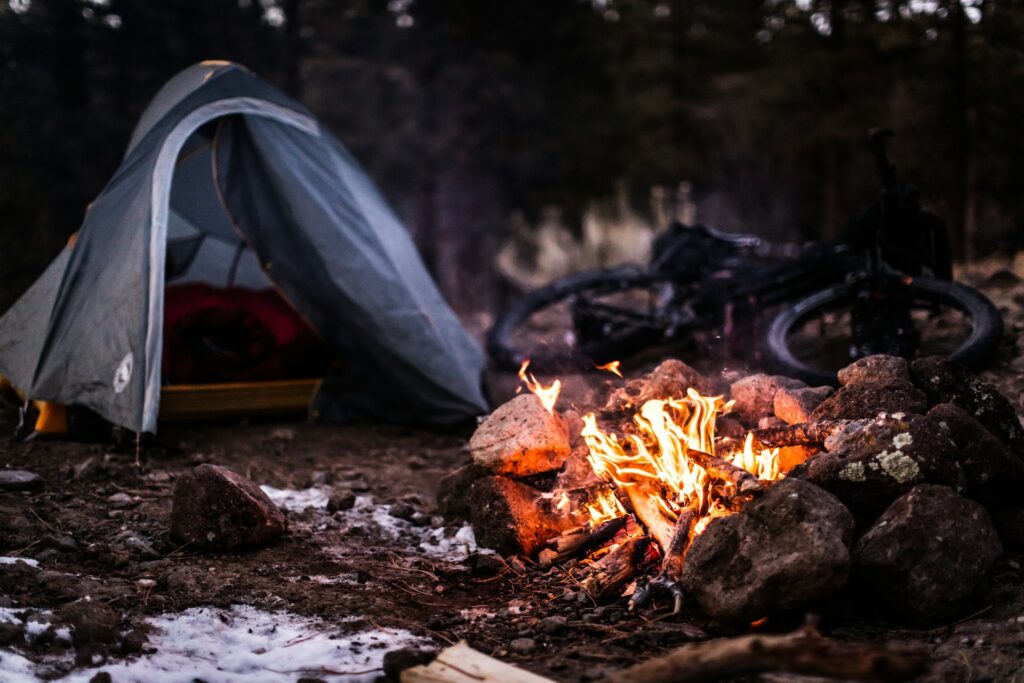
Your sleep system is your defense against the night’s deepest cold and requires careful consideration beyond simply bringing a warm sleeping bag. Start with two sleeping pads—a closed-cell foam pad directly on the snow provides crucial insulation, while an inflatable pad atop it adds comfort and additional R-value protection. Consider using a sleeping bag liner which can add 5-15°F of warmth while keeping your sleeping bag cleaner.
Before sleeping, prepare a hot water bottle (using a durable, leak-proof bottle) and place it in your sleeping bag’s foot box to pre-warm your bed and provide hours of radiant heat. Wear clean, dry base layers and socks dedicated solely for sleeping—never sleep in the clothes you wore while active, as they contain moisture that will cool you throughout the night. A down-insulated jacket stuffed into your sleeping bag’s hood creates a makeshift pillow while keeping it warm and available if you need to exit your tent during the night.
Hydration and Nutrition Strategies
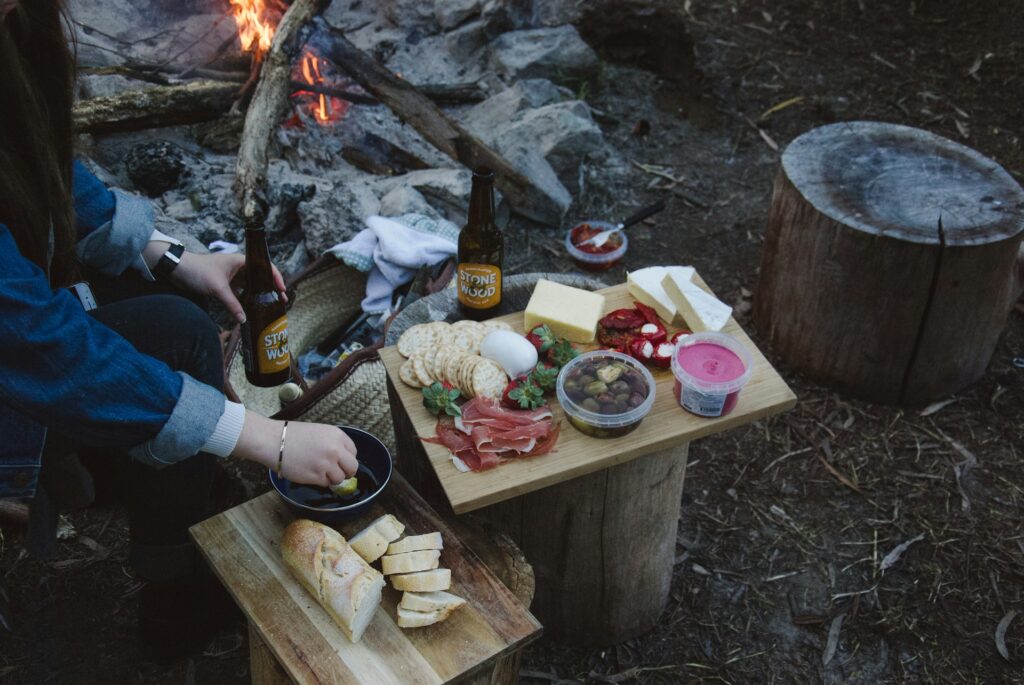
Your body requires significantly more calories in cold weather—up to 4,500-5,000 calories daily during active winter camping—to maintain core temperature and energy levels. Focus on calorie-dense foods rich in fats and complex carbohydrates, which provide sustained energy throughout cold nights. Proper hydration remains crucial despite not feeling as thirsty; dehydration impairs circulation and contributes to hypothermia risk, so aim to drink at least 3-4 liters daily, using insulated bottles to prevent freezing. Hot drinks and soups serve dual purposes of hydration and warming from within, making them excellent choices throughout the day.
Consider eating a small, fatty snack before bed, as digestion generates internal heat that can help keep you warmer during the night. Store tomorrow’s breakfast and some drinking water in your sleeping bag overnight to prevent freezing and to reduce the morning challenge of preparing food with cold hands in frigid temperatures.
Fire-Building Techniques in Snow and Ice
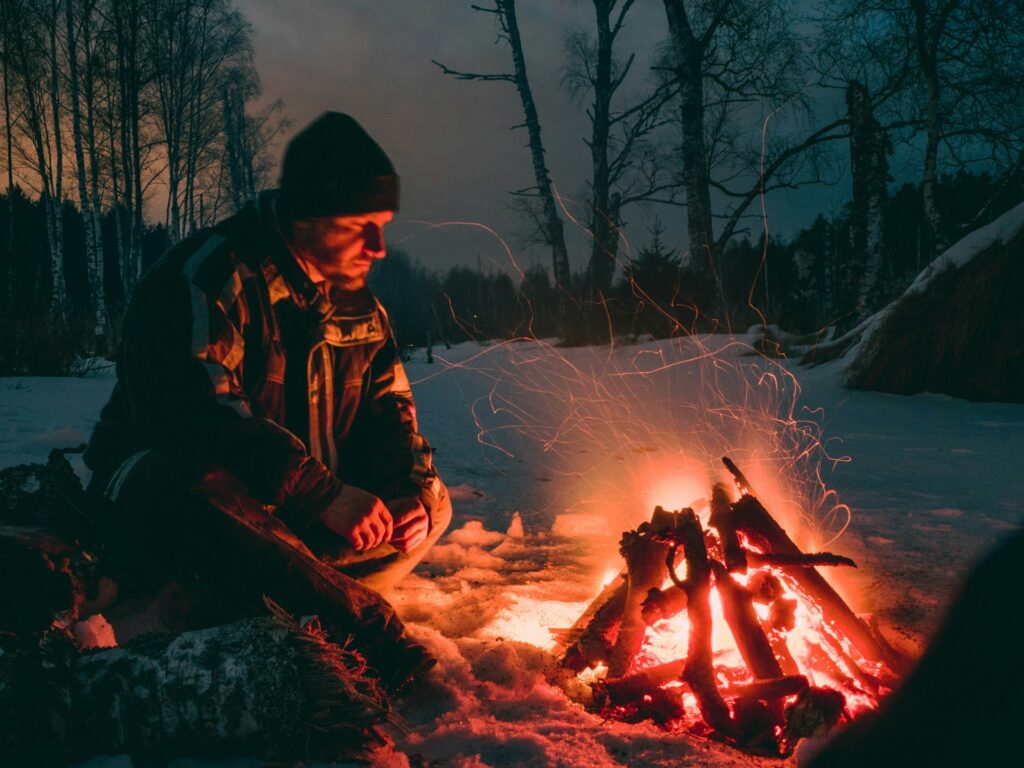
Creating and maintaining fire in winter conditions presents unique challenges that require specialized techniques and preparation. Begin by establishing a proper base—either dig down to bare earth or create a platform of green logs or stones that will insulate your fire from the snow beneath, preventing it from melting into slush and extinguishing itself. Carry multiple fire-starting tools including weatherproof matches, ferrocerium rods, and commercial fire starters, as redundancy is essential when fire may become a survival necessity.
Harvest standing deadwood rather than fallen wood, which is likely wet from snow contact, and split larger pieces to access the dry interior. Prepare and store a supply of tinder in waterproof containers before your trip—dryer lint mixed with petroleum jelly, commercial fire starters, and cotton balls soaked in wax all provide reliable ignition sources in adverse conditions. Construct a reflector wall from green logs or packed snow on the side of your fire opposite your seating area to direct more heat toward you and increase the fire’s efficiency in warming your body.
Emergency Shelter Construction
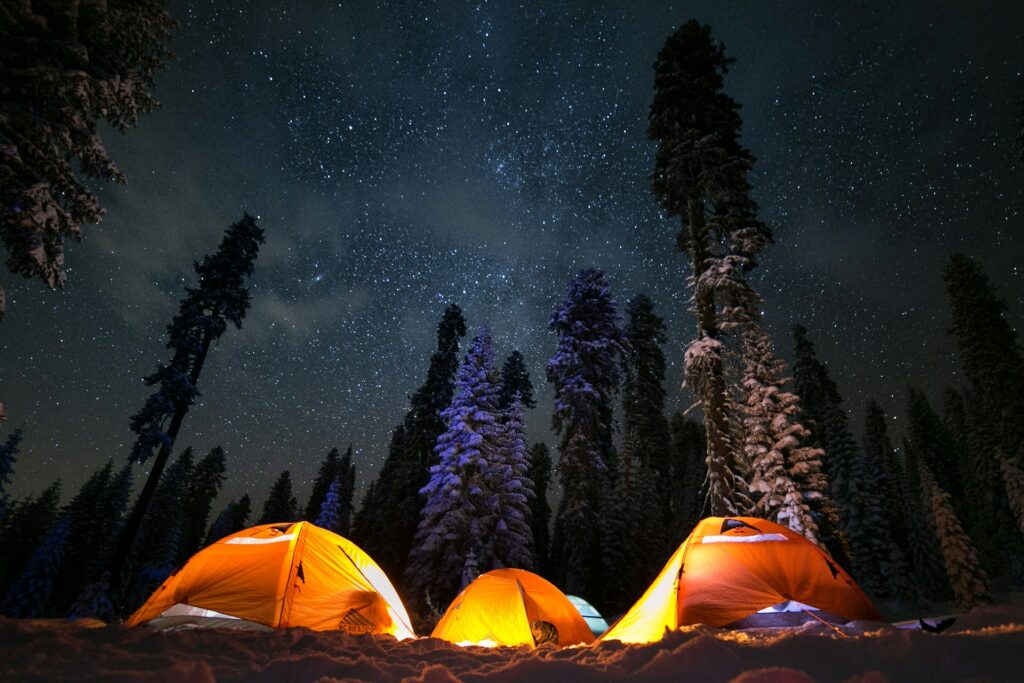
Knowledge of emergency snow shelter construction could save your life if your primary shelter fails or becomes unreachable in a storm. Snow quinzhees—dome-shaped shelters made by hollowing out a pile of compacted snow—can be built in a few hours and provide surprising warmth due to snow’s insulating properties. Snow caves dug into existing snowdrifts or snowbanks offer quick shelter with minimal equipment, though care must be taken to ensure proper ventilation and to avoid locations with avalanche risk.
The tree pit shelter—the depression found around the base of evergreen trees—provides a ready-made shelter foundation that can be enhanced with additional branches and snow walls. Emergency trenches, simple rectangular pits dug in snow and covered with a tarp or branches and snow, can be constructed quickly when energy conservation is critical. Whatever emergency shelter you build, always include ventilation holes to prevent carbon dioxide buildup and ensure the entrance is positioned away from prevailing winds.
Recognizing and Treating Cold-Related Injuries
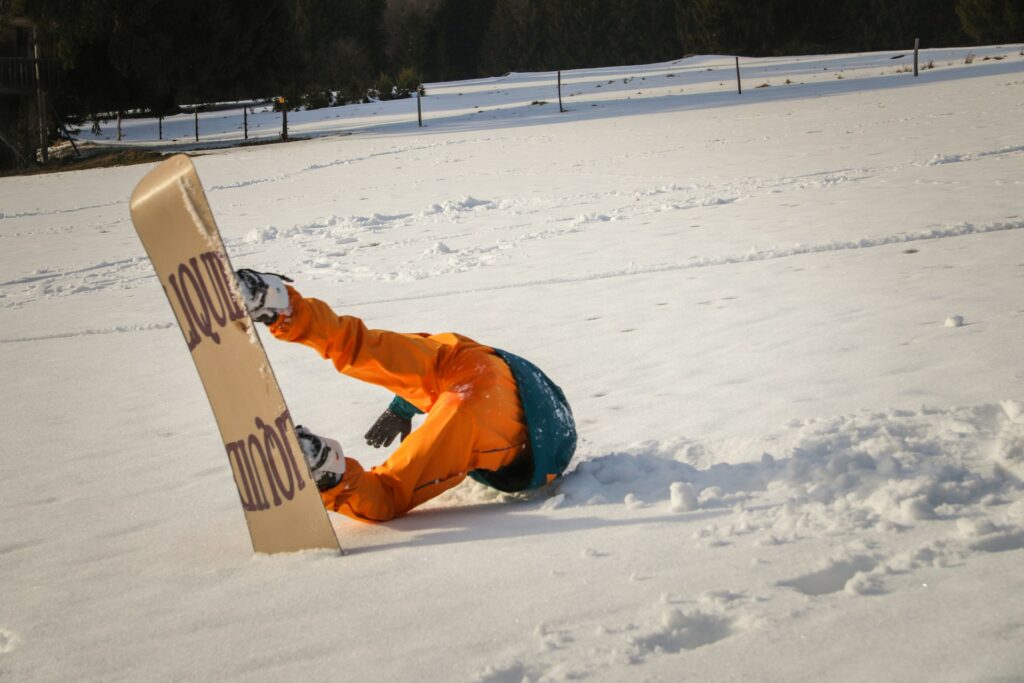
The ability to identify and treat cold-related injuries can prevent minor issues from developing into life-threatening emergencies during winter camping expeditions. Hypothermia’s progression begins with subtle signs: shivering, confusion, fumbling hands, and slurred speech, before advancing to dangerous stages marked by cessation of shivering, severe mental confusion, and eventually unconsciousness. Frostbite initially appears as firm, waxy skin with white, gray, or yellowish patches, often on extremities like fingers, toes, nose, and ears, with the affected areas becoming numb to sensation.
Trench foot (immersion foot) develops after prolonged exposure to wet, cold conditions, appearing as pale, wrinkled skin that later becomes red, swollen, and potentially develops blisters or open sores. For all these conditions, the immediate priorities are removing the victim from the cold environment, replacing wet clothing with dry layers, and applying appropriate warming measures—gradual rewarming for hypothermia, body-temperature water for frostbite (never rub or use direct heat), and air-drying for trench foot, while arranging evacuation for serious cases.
Winter Navigation Challenges
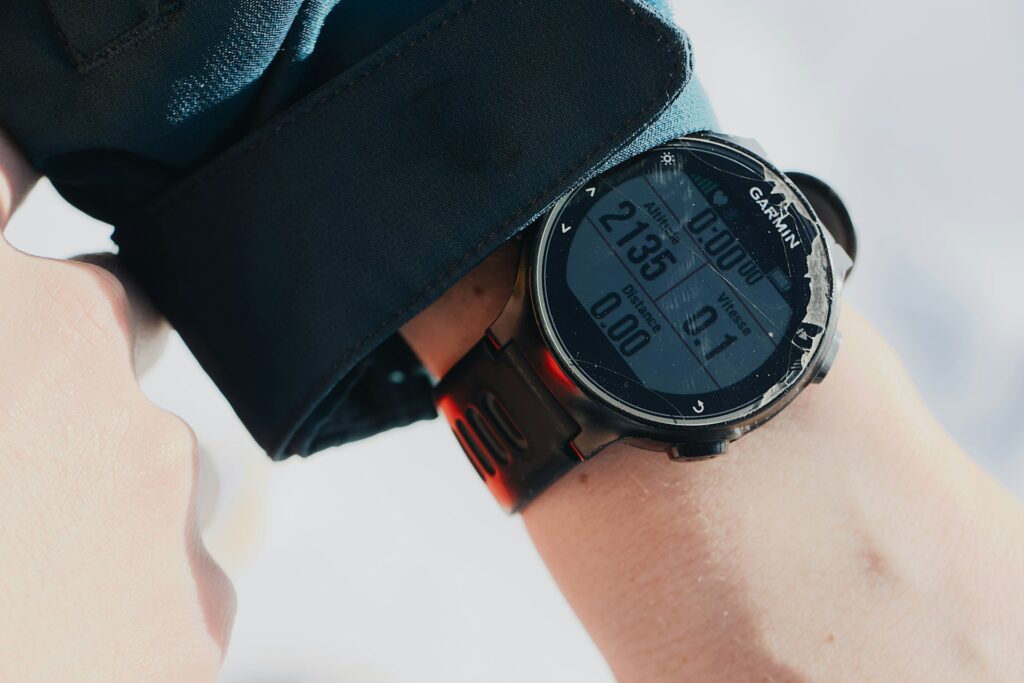
Navigation becomes exponentially more difficult in winter landscapes where familiar landmarks disappear under snow and whiteout conditions can disorient even experienced outdoorsmen. Carry multiple navigation tools including a topographic map in a waterproof case, a magnetic compass (remember that battery-powered devices can fail in extreme cold), and a GPS unit with spare batteries kept warm in an inside pocket. Develop the habit of taking frequent bearings and mentally noting terrain features, especially when visibility is good, so you’ll have reference points if conditions deteriorate.
Learn to recognize subtle terrain indicators that remain visible in snow, such as changes in vegetation patterns or slight variations in snow surface that might indicate features beneath. Blaze your trail with temporary markers when traveling through featureless terrain, particularly if you’ll need to retrace your steps in poor visibility. Consider setting predefined GPS waypoints at your campsite and other critical locations before exploring the surrounding area, providing electronic breadcrumbs back to safety.
Managing Winter Camping Hygiene
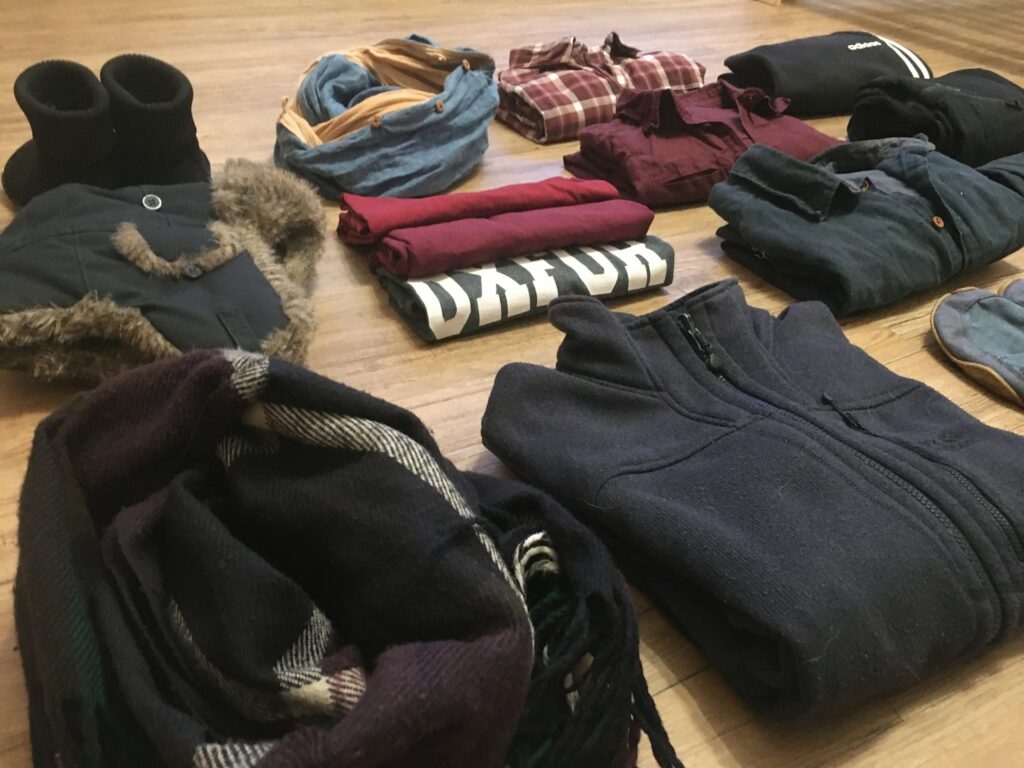
Maintaining personal hygiene during winter camping is not merely about comfort—it’s a critical component of health and safety in extreme environments. Perspiration-soaked clothing accelerates heat loss and increases hypothermia risk, making regular changes of base layers essential despite the challenges of undressing in cold temperatures. Develop a system for hand sanitization before handling food, as gastrointestinal illness can rapidly lead to dehydration and compromised safety in backcountry settings.
For toilet hygiene, select a designated area away from water sources and campsites, using a small trowel to dig through snow to soil when possible, or packing out waste in high-use or environmentally sensitive areas. Consider bringing pre-moistened wipes (stored in a zip-lock bag kept warm inside your jacket) for basic cleansing when traditional washing isn’t possible. While full-body cleaning may be limited, prioritize keeping feet clean and dry, checking daily for hot spots or early signs of frostbite, and changing into clean, dry socks regularly to prevent potentially dangerous foot conditions.
Winter-Specific Cooking Techniques
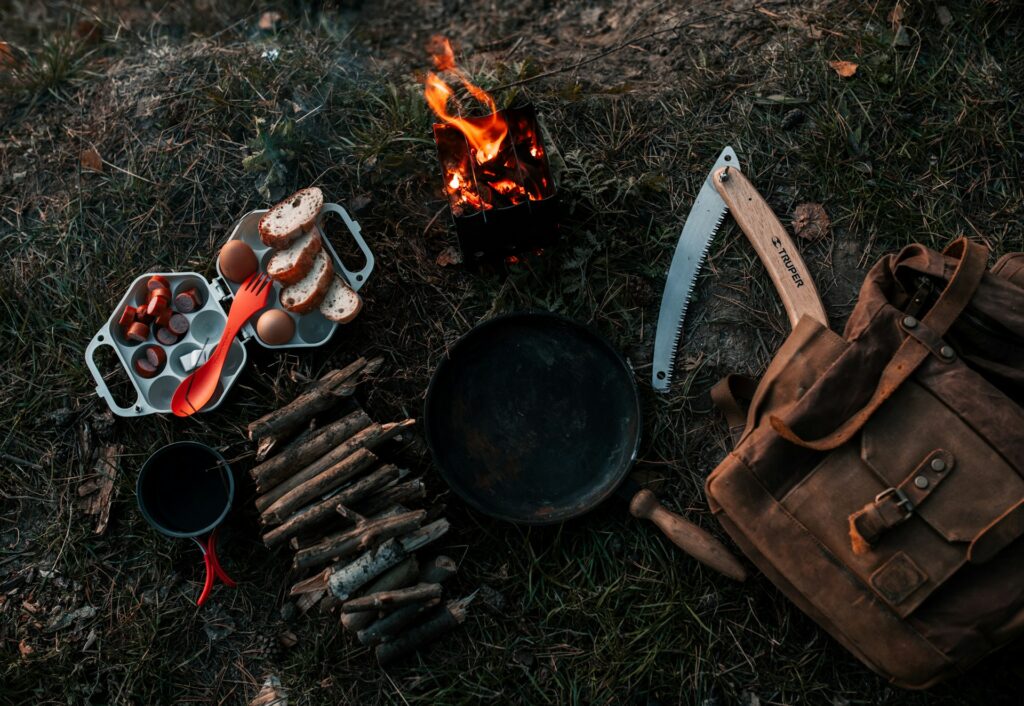
Cooking in sub-freezing temperatures requires modifications to standard backcountry techniques, beginning with fuel considerations—liquid-fuel stoves generally outperform canister stoves in extreme cold, though keeping canister stoves warm in your jacket before use and sleeping with the canister can improve their performance. Create a dedicated kitchen area protected from wind, ideally incorporating a snow wall or natural windbreak, and establish a stable cooking surface by packing snow or creating a platform from a foam pad.
Melting snow for water becomes a primary camp chore requiring significant fuel, so start with any available liquid water and add small amounts of snow gradually to prevent scorching your pot and wasting fuel. Simplify meals to reduce cooking time and complexity while wearing gloves, focusing on one-pot recipes that maximize calories and minimize cleanup in freezing conditions. Insulated cozies for pots and food can extend eating time before meals become unappealingly cold and help conserve the body-warming benefits of hot food.
Mental Preparedness for Winter Isolation
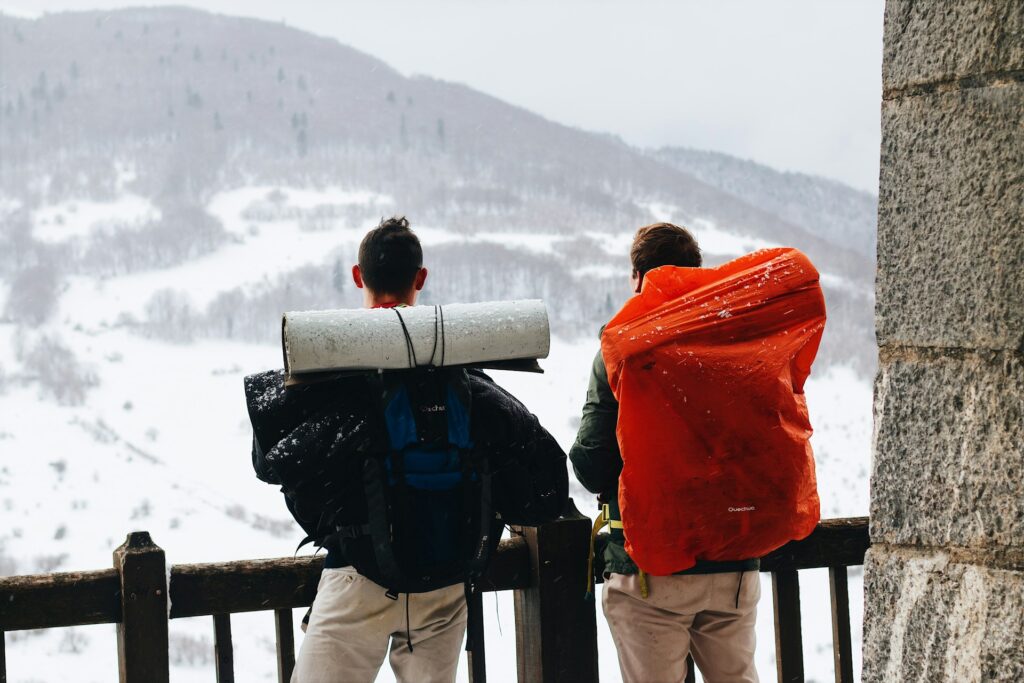
The psychological challenges of winter camping often prove as demanding as the physical ones, particularly during multi-day expeditions where daylight remains limited and weather may confine you to your shelter for extended periods. Before departure, establish clear communication plans with emergency contacts, including expected check-in times and specific protocols for when to alert authorities if you don’t report in. Pack small comforts that boost morale without adding significant weight—perhaps a favorite book, playing cards, or a special food treat reserved for difficult moments.
Develop strategies for maintaining a positive mindset during storm days, such as setting small camp improvement projects, practicing navigation skills, or documenting your journey through writing or photography. Remember that sleep quality often suffers in extreme environments, potentially affecting judgment and emotional regulation, so prioritize rest and recognize when irritability or risk tolerance might be influenced by sleep deprivation. Most importantly, maintain the humility to recognize when conditions exceed your preparation or skill level, making the decision to turn back or seek assistance before emergencies develop.
The Ethics of Winter Leave-No-Trace
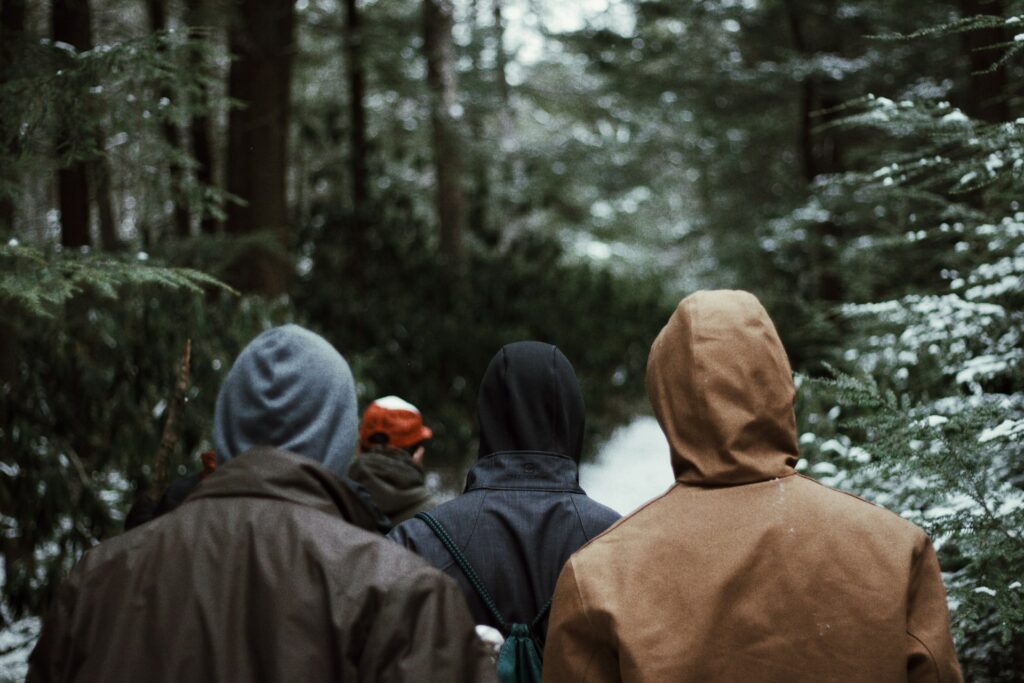
Responsible winter camping requires adapting standard Leave No Trace principles to snow-covered environments, where impacts may seem less visible but can still harm fragile ecosystems. When selecting campsites, concentrate use in locations where vegetation is completely snow-covered to prevent damage to dormant plants that might be crushed under tents or foot traffic. Properly dispose of human waste by packing it out completely or depositing it in catholes dug through snow to soil at least 200 feet from water sources, and always pack out toilet paper in sealed bags.
Be particularly cautious with food scraps and gray water disposal, as even small amounts can attract wildlife to your campsite and disrupt their natural feeding patterns during a season when many species already struggle with energy conservation. Consider the impact of tree cutting, even for emergency purposes—removing branches damages trees that are already under winter stress, so gather only already-fallen wood when absolutely necessary. Remember that winter’s silence is a precious resource for both wildlife and other wilderness users, so minimize unnecessary noise that might disrupt this unique seasonal quality.
Conclusion
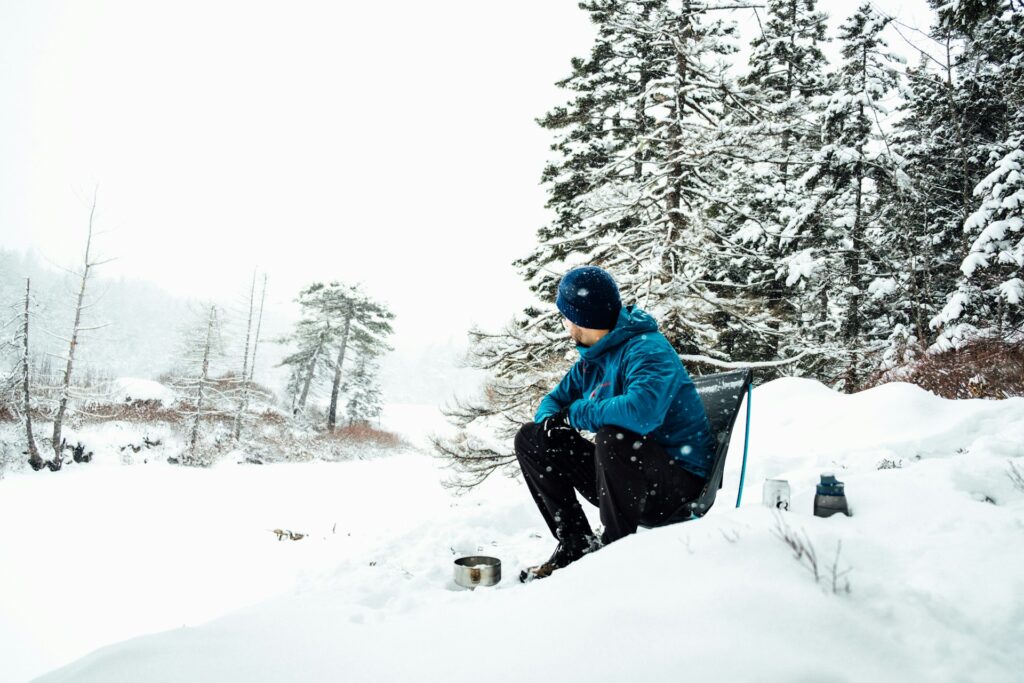
Winter camping represents the ultimate test of outdoor skills, requiring meticulous preparation, specialized knowledge, and mental resilience. Yet for those who accept the challenge, it offers rewards few other outdoor experiences can match: pristine solitude, breathtaking beauty, and the profound satisfaction of self-reliance in one of nature’s most demanding environments. By thoroughly understanding the risks, mastering essential techniques, and preparing both physically and mentally, you can transform the frozen wilderness from a forbidding space into a realm of extraordinary adventure.
Whether you’re building your first quinzhee shelter or planning an extended backcountry ski expedition, remember that successful winter camping isn’t about conquering the elements but working in harmony with them, respecting winter’s power while embracing its magnificent gifts. So, can you handle the freeze? With the right knowledge, gear, and attitude, the answer is a resounding yes—and the winter wilderness awaits your discovery.

